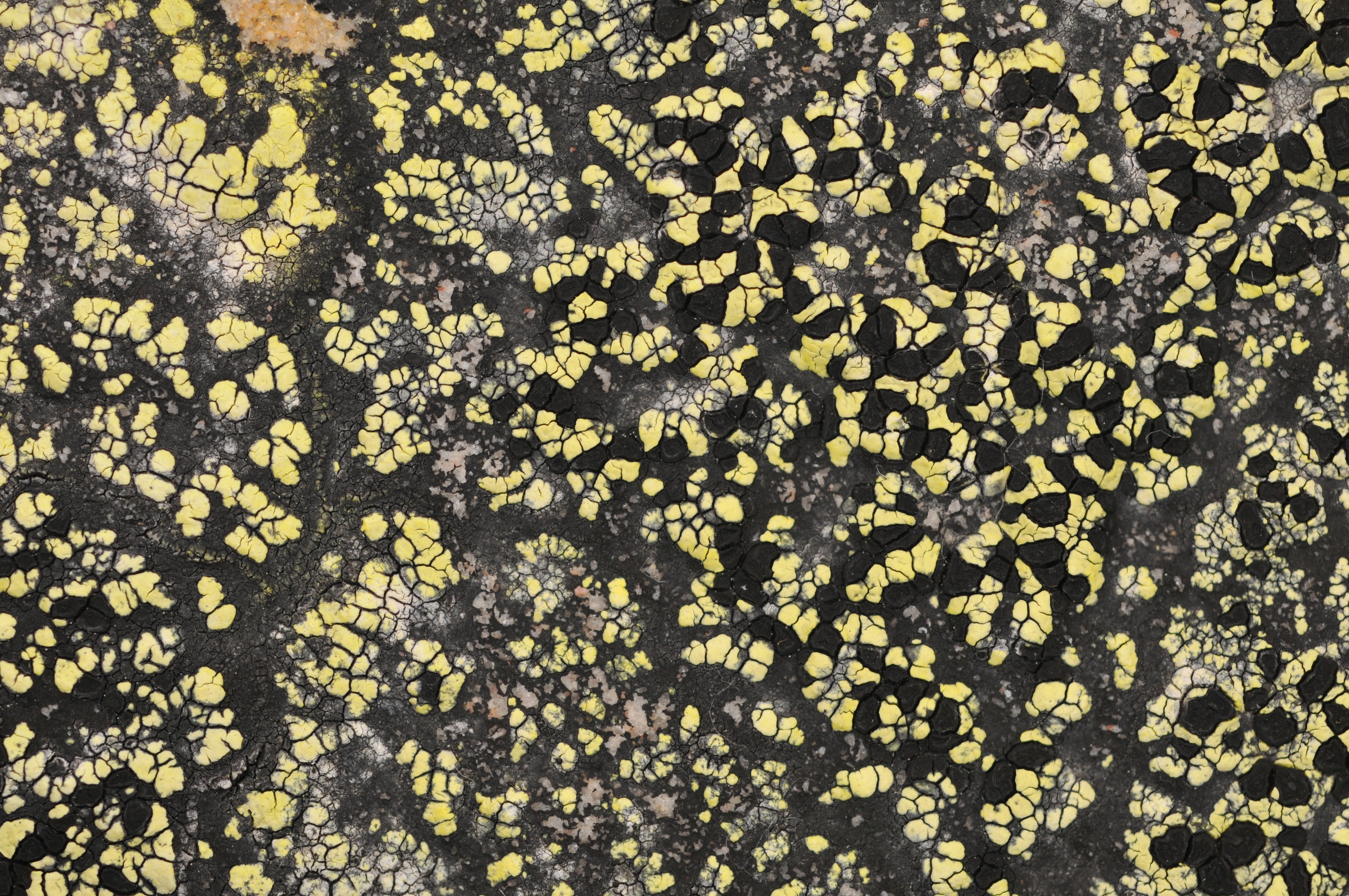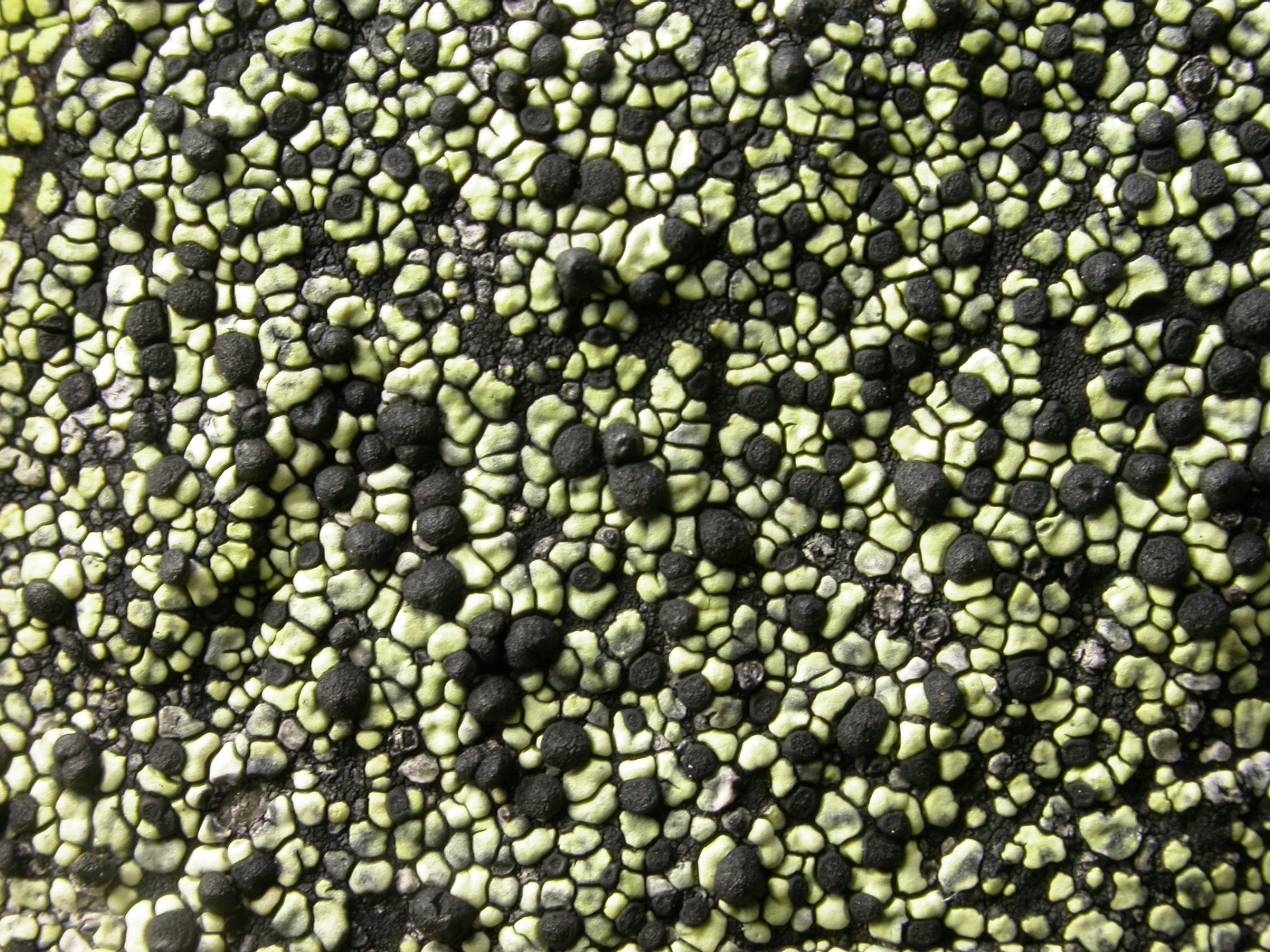Rhizocarpon eupetraeoides
- Innhold
- Morphology
- Chemistry
- Habitat
- Comment
- Look-alikes
Morphology
Thallus areolate, usually up to 10 cm diam.; hypothallus well developed, black; areolae up to 1.5 mm diam., bright yellow, dull, contiguous to somewhat scattered, usually cracked, rather thick, orbicular to angular, plane to moderately convex; medulla KI+ dark violet. – Apothecia up to 1.5 mm diam., black, epruinose, more or less orbicular, plane to weakly convex, with a distinct to indistinct margin; excipulum olivaceous brown in the rim, pale brown to colourless in the inner part, containing crystals, pigment K– (turning more brightly green), crystals K+ red (forming acicular crystals); hypothecium dark brown, K–; hymenium colourless; epihymenium olivaceous green, containing crystals, pigment K– (turning more brightly green), crystals K+ red (forming acicular crystals); ascospores 8 per ascus, 1-septate, dark brown, 18–32 × 10–15 µm. – Conidiomata not seen.
Chemistry
Rhizocarpic and norstictic acid; spot tests: medulla, excipulum and epihymenium PD+ yellow, K+ red, C–.
Habitat
On siliceous rock in the mountains. Rarely collected.
Comment
The two other yellow Rhizocarpon species with 1-septate, more than 18 µm long ascospores are R. alpicola and R. inarense. Both have a non-amyloid medulla; the former also differs in containing psoromic acid and the latter in having more rounded and convex apothecia. Rhizocarpon eupetraeoides is a poorly understood species.


